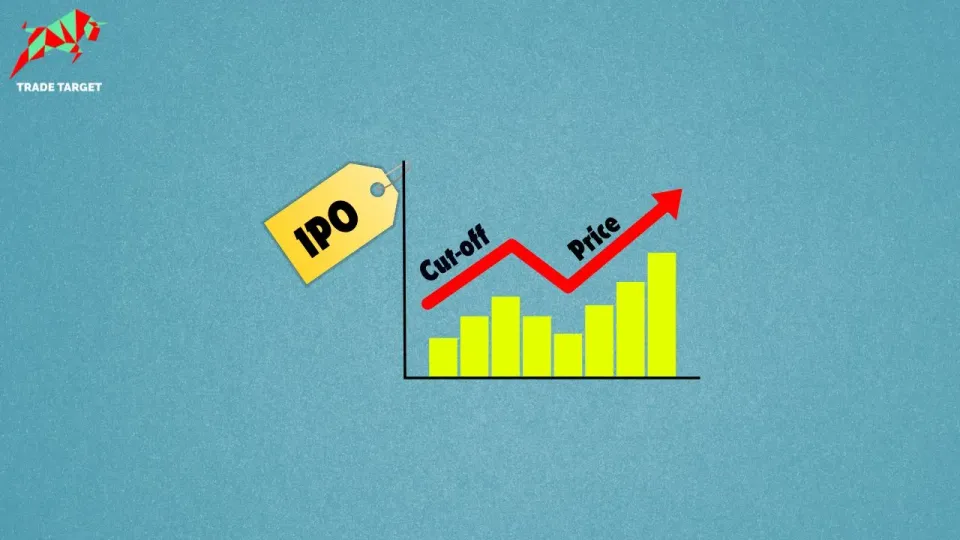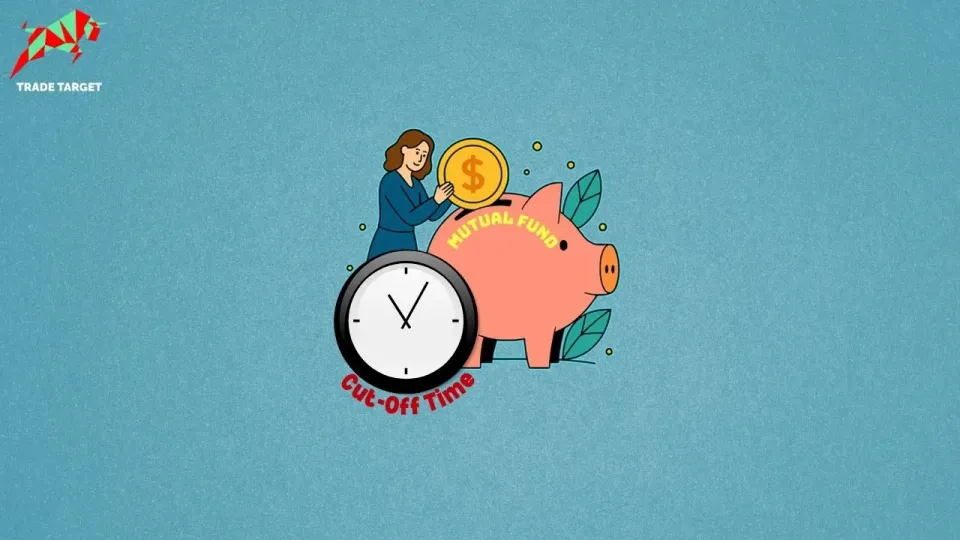Subscribe for real-time financial insights on Trade Target’s WhatsApp Channels
When a company goes public for the first time through an Initial Public Offering or IPO, it gives investors a chance to become part owners by buying its shares. But before investing, it’s important to understand how the IPO pricing works, especially the concept of the cut-off price.
In this blog, we’ll explain what exactly cut-off price in IPO means, how it’s determined and the different types of IPO pricing used in India.
What is Cut-off Price in an IPO?
When a company launches an IPO, it sets a price band—a minimum and maximum price range. Investors can place bids within this band. Once all bids are collected, the company, along with its merchant bankers—determines the price point where the demand matches the number of shares offered. This final price is known as the cut off price.
Retail investors in India have the option to select “cut-off price” while applying. This means they agree to buy shares at the final price, whatever it may be within the price band. This increases their chances of getting an allotment without having to guess the exact bid price.
Cut off price in an IPO is a key part of the book building process, helping companies discover the right price through investor demand. SEBI closely regulates this process to ensure fairness and transparency.
Types of IPO Pricing:
When a company launches its IPO, it can choose one of two pricing methods, which are Fixed Price or Book Building. These methods determine how share price is set and how investors participate in the offering.
- Fixed Price IPO
In Fixed Price IPO, company announces the exact price per share at the time of IPO launch. This gives investors complete clarity on how much they will pay. However subscription data, such as how many retail or institutional investors are applying, is only disclosed after the IPO closes. This method offers price certainty but limited visibility during the application period.
- Book Building IPO
In a Book Building IPO, the company sets a price band, with a minimum (floor price) and a maximum (cap price). Investors place bids within this range and the final share price is decided based on demand. This pricing model helps companies gauge market interest and determine the IPO cut off price. Unlike fixed price issues, subscription figures for different investor categories are published daily during IPO window, offering better transparency.
Most IPOs in India today follow the Book Building process, as it allows for more accurate price discovery and reflects real time investor sentiment.
Factors Influencing Cut off Prices in an IPO
After understanding what the bid price and cut-off price mean in an IPO, it’s important to know what influences cut-off price during the IPO process. Cut-off price is not random, it is determined based on several key market and company specific factors. Here are the main factors that impact IPO cut-off price:
- Investor Demand: Level of demand for IPO plays a major role. If investor interest is high from retail and institutional investors, cut-off price tends to move towards the upper end of the price band. Else, weak demand may result in a lower cut-off price.
- Market Conditions: Broader market trends and economic conditions also influence the pricing. In a bullish or growing market, companies are more confident in setting a higher cut-off price. But in a bearish or uncertain market, cut-off price may be set conservatively.
- Company Fundamentals: Financial health and performance of the company also matter. Strong revenue growth, consistent profits and a stable business model attract more investors, leading to higher demand and a potentially higher cut-off price.
- Marketing and Brand Visibility: A well marketed IPO gains more attention. Effective advertising and media coverage can boost investor awareness, increasing participation and influencing the final cut-off price.
Cut-Off Price Calculation Process Using a Formula
Cut-off price in an IPO is not what retail investors calculate on their own. Instead, it is the final price decided by the company and its underwriters during the book building process, based on investor demand. Here’s how cut-off price is determined:
- Bidding Phase: Investors place bids within the given price band or simply choose the “cut-off” option.
- Demand Aggregation: Merchant bankers collect all bids and calculate the demand at each price level within the band.
- Book Analysis: They analyze this demand book across investor categories, QIBs, NIIs and retail investors.
- Final Price Discovery: The price at which the demand meets or exceeds the number of shares offered becomes the cut-off price.
For example, if the price range is between ₹120 and ₹130 and most bids from retail investors using cut-off option are concentrated at ₹130, the final IPO cut-off price will likely be set at ₹130.
How to Improve Your Chances of Getting an IPO Allotment
Many investors know what cut-off price in an IPO means, but understanding it alone isn’t enough to secure allotment, especially in oversubscribed IPOs. In book building IPOs, the allotment process works like a lottery. Even if you apply, there’s no guarantee you’ll get the shares.
Still, there are a few strategies that can improve your chances of getting an IPO allotment:
- Apply early during the IPO window and always choose the cut-off price. This ensures your application stays valid, no matter where the final price is set within the price band.
- Apply for a single lot, as retail allotments are done on a proportionate or lottery basis and single lot bids are more likely to be picked.
- Use multiple demat accounts under different names (friends or family members) to apply at the cut off price. This increases your chances without violating any SEBI rules.
Final Words
Cut-off price in an IPO is the final price decided by investor demand during the bidding process. For retail investors, applying at the cut-off price is one of the best ways to stay eligible for allotment.
By understanding how the IPO cut-off price works and following these practical way, you can improve your chances of getting shares in a high demand IPO, without relying purely on luck.
Happy investing and thank you for reading!
Disclaimer:
This website content is only for educational purposes, not investment advice. Before making any investment, it’s important to do your own research and be fully informed. Investing in the stock market includes risks, and you should carefully read the Risk Disclosure documents before proceeding. Please remember that past performance doesn’t guarantee future results, and due to market fluctuations, your investment goals may not always be achieved.
Share via:










